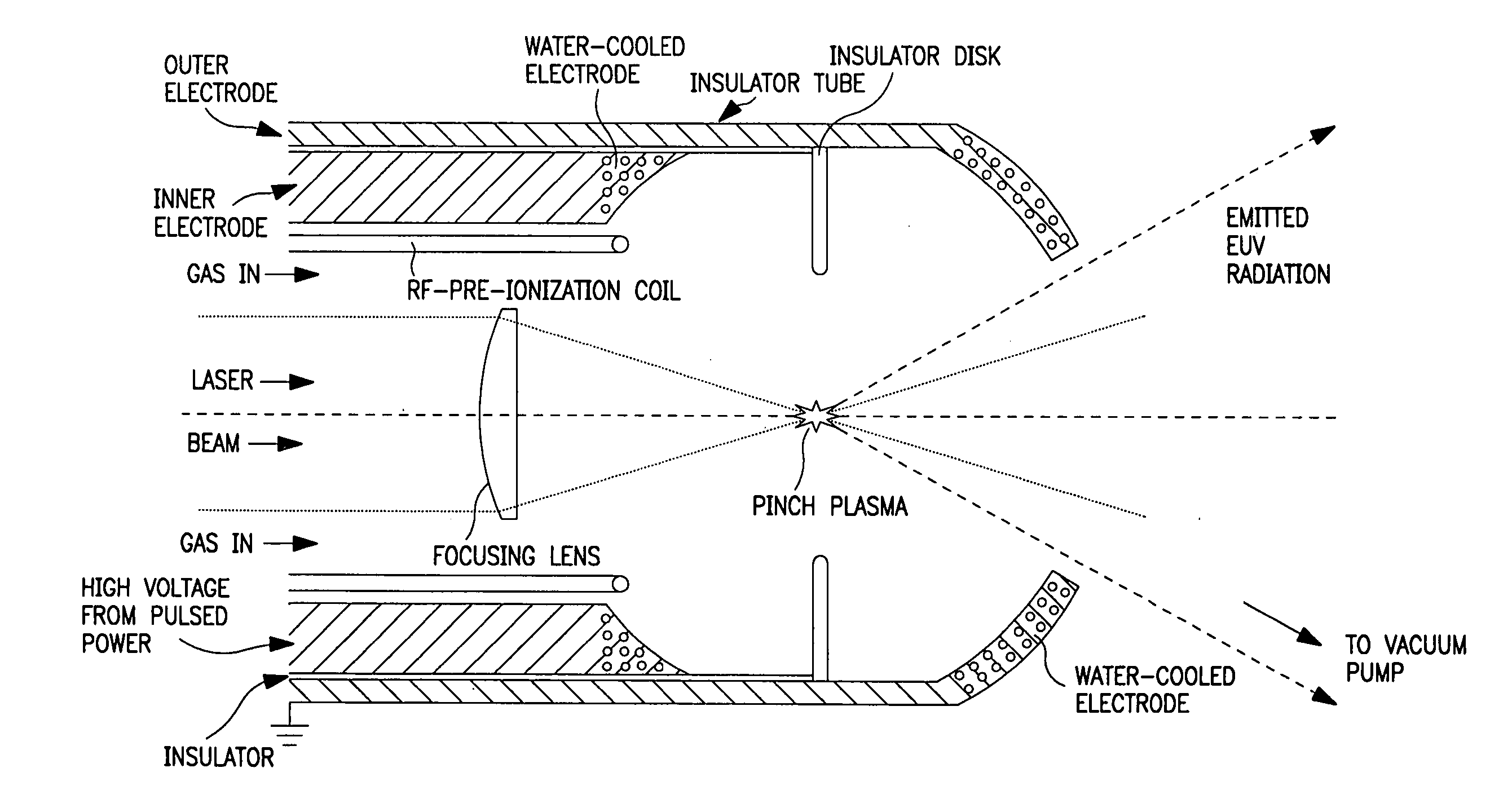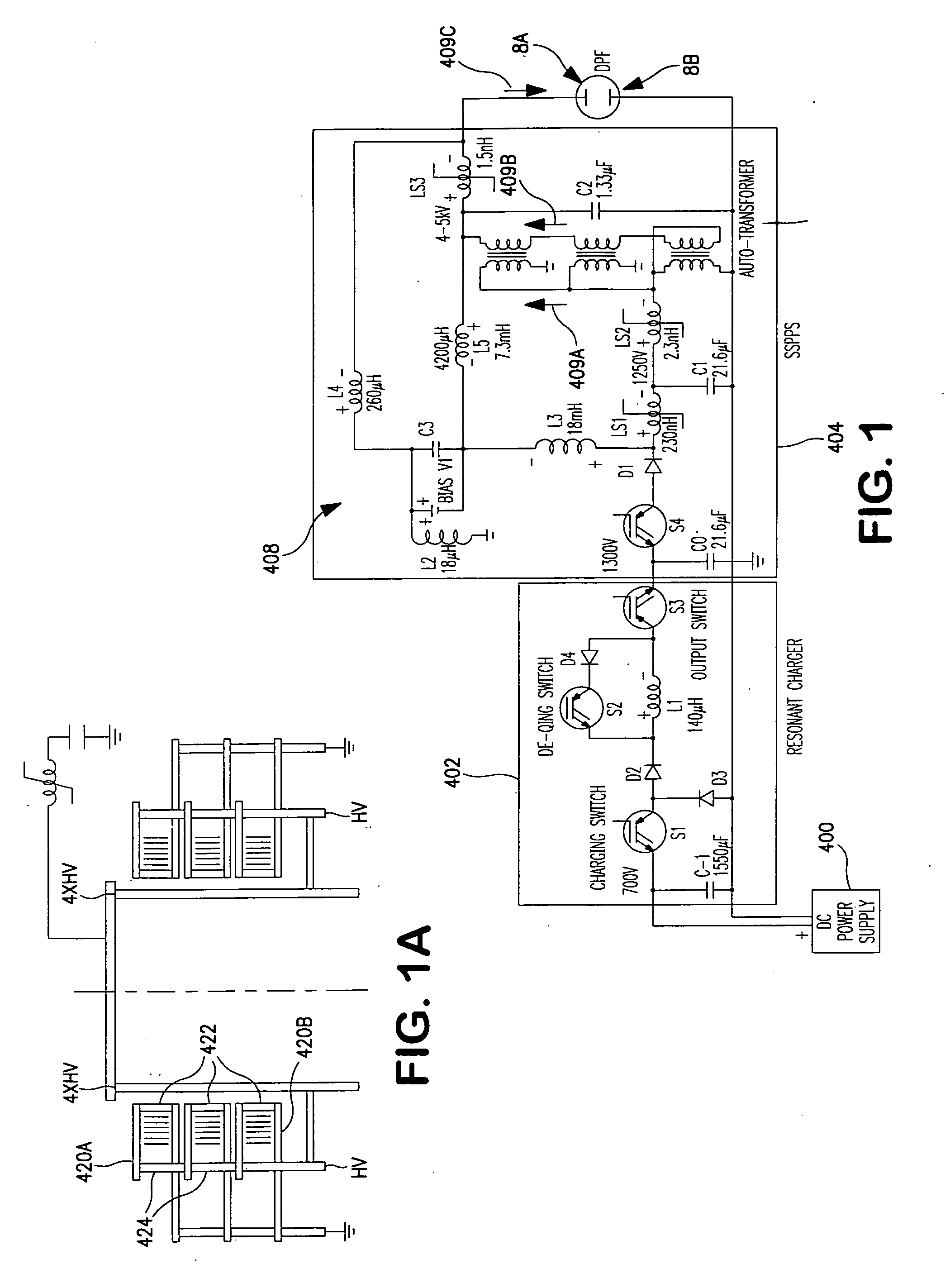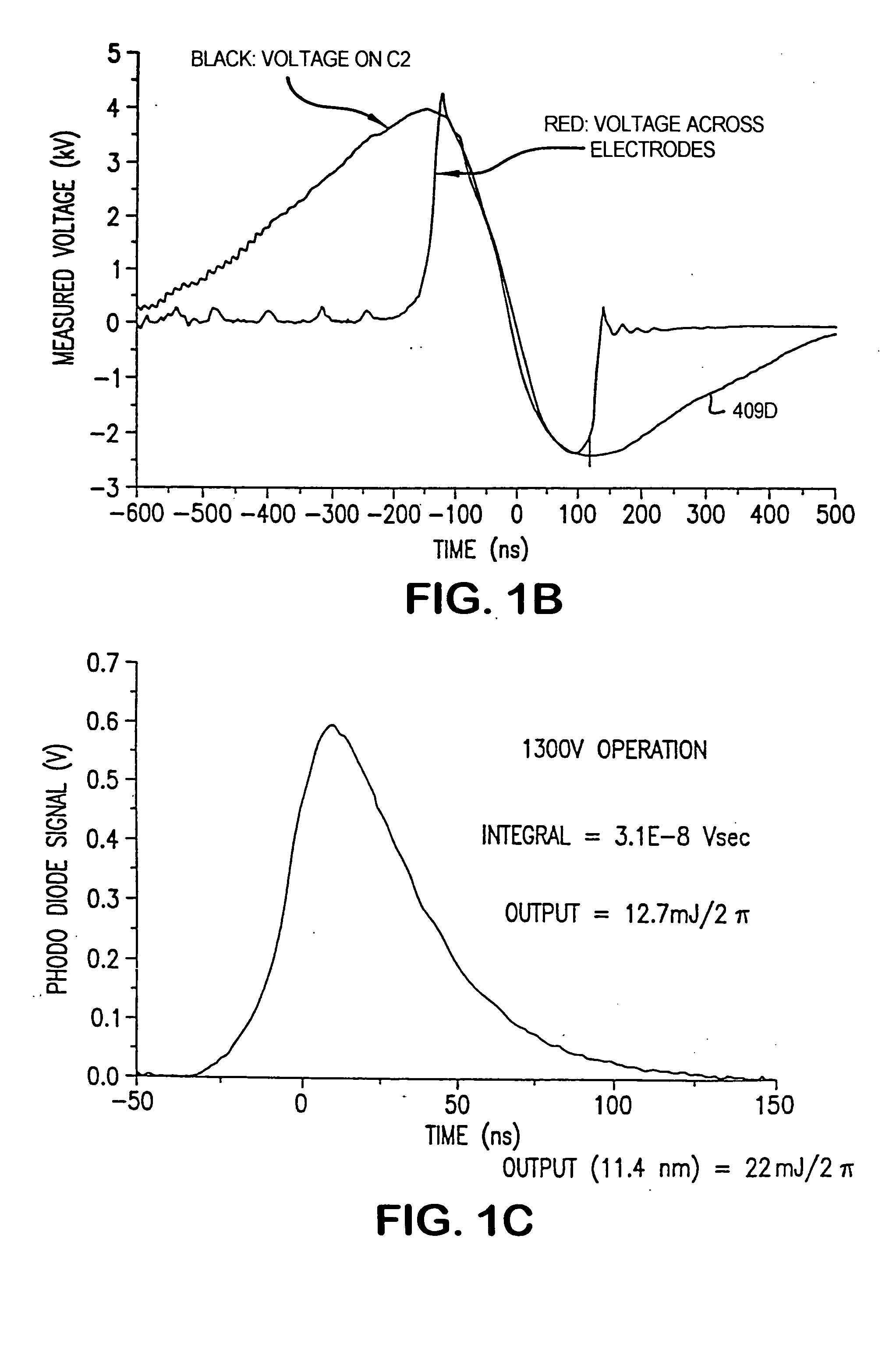Extreme ultraviolet light source
- Summary
- Abstract
- Description
- Claims
- Application Information
AI Technical Summary
Benefits of technology
Problems solved by technology
Method used
Image
Examples
Embodiment Construction
Hot Plamas
[0060] To produce light in the spectral range of 13-14 nm from plasma requires a very hot plasma corresponding to temperatures of in the range of several thousand degrees Celsius. Plasmas at these temperatures can be created by focusing a very high power (very short pulse) laser beam or a high energy electron beam on the surface of a metal target. It is also possible to produce very hot plasma in a gas with electric discharges using any of several special discharge techniques which focus or pinch the plasma.
[0061] These techniques included (1) a dense plasma focus technique (2) a regular Z-pinch technique, (3) a hollow cathode Z-pinch and (4) a capillary discharge technique. All of these techniques are discussed in greater detail below. For use as a lithography light source for integrated circuit fabrication the light source and the power supply for it should be capable of continuous, reliable, round-the-clock operation for many billions of pulses. This is because the li...
PUM
 Login to View More
Login to View More Abstract
Description
Claims
Application Information
 Login to View More
Login to View More - R&D
- Intellectual Property
- Life Sciences
- Materials
- Tech Scout
- Unparalleled Data Quality
- Higher Quality Content
- 60% Fewer Hallucinations
Browse by: Latest US Patents, China's latest patents, Technical Efficacy Thesaurus, Application Domain, Technology Topic, Popular Technical Reports.
© 2025 PatSnap. All rights reserved.Legal|Privacy policy|Modern Slavery Act Transparency Statement|Sitemap|About US| Contact US: help@patsnap.com



